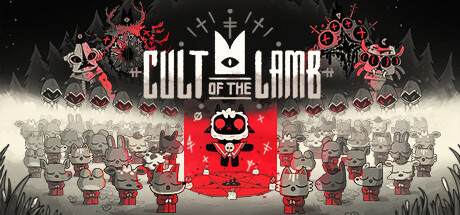Cult of the Lamb (Released Aug 11, 2022)
When Cult of the Lamb arrived in August 2022, it felt like a strange alchemy. Imagine the midnight rituals of old 2D roguelikes sewn to a bright, deceptively cute colony sim. As PlayerProX, I come from a competitive, systems-first mindset. Nevertheless, what struck me most was how the game wears its contradictions openly. It pairs pastoral, adorable art with dark humor and blunt resource calculus. Consequently, this is a game about devotion and optimization as much as spectacle and sacrament.
Storyline & Themes
At its core, Cult of the Lamb tells a compact, mythic tale. You play a possessed lamb spared from annihilation by an ominous stranger. In return, you must build a devoted following in his name. As the story unfolds, you encounter rival cult leaders and false prophets across four mysterious regions. Ultimately, each area ends in a boss fight that grants new powers and expands your influence.
The game is deliberately archetypal. Themes of salvation, debt, conversion, and ascendancy form its backbone. Yet, its brilliance lies not in originality, but in weaving familiar cult and folklore tropes into interactive systems. For example, sermons boost morale, rituals demand sacrifice, and charisma builds slowly as your flock grows. As a result, the tone shifts smoothly between black comedy and myth, always exploring the mechanics of charismatic leadership.

Gameplay Mechanics
The game blends several familiar systems into a cohesive loop. Specifically, the main pillars are dungeon combat, base-building, and the performative aspects of leadership.
- Exploration & Combat — Each region contains randomized dungeons and biomes. Combat is tight and action-focused; you dodge, attack, and use relics or prayers to turn the tide. Although death resets some progress, it fuels meta-progression through absorbed powers and new abilities.
- Base-building & Resource Management — Back at your commune, you transform resources into structures, decorations, and production chains. As buildings unlock services, they give followers jobs and create visible growth.
- Follower Systems & Belief — Followers act as both characters and economic drivers. By assigning jobs, meeting needs, and holding sermons, you reinforce loyalty. In this sense, religion becomes a currency. If you succeed, your flock grows; however, if you fail, dissent spreads.
- Rituals & Sermons — Rituals can boost production, heal followers, or demand sacrifices for greater gain. Likewise, sermons function as skill checks, translating your upgrades into morale and obedience.
Visuals & Audio
Visually, the game is a study in contrast. Cute, hand-drawn designs and saturated colors soften the dark themes. Furthermore, animations are expressive, from idle follower behaviors to ritual flourishes.
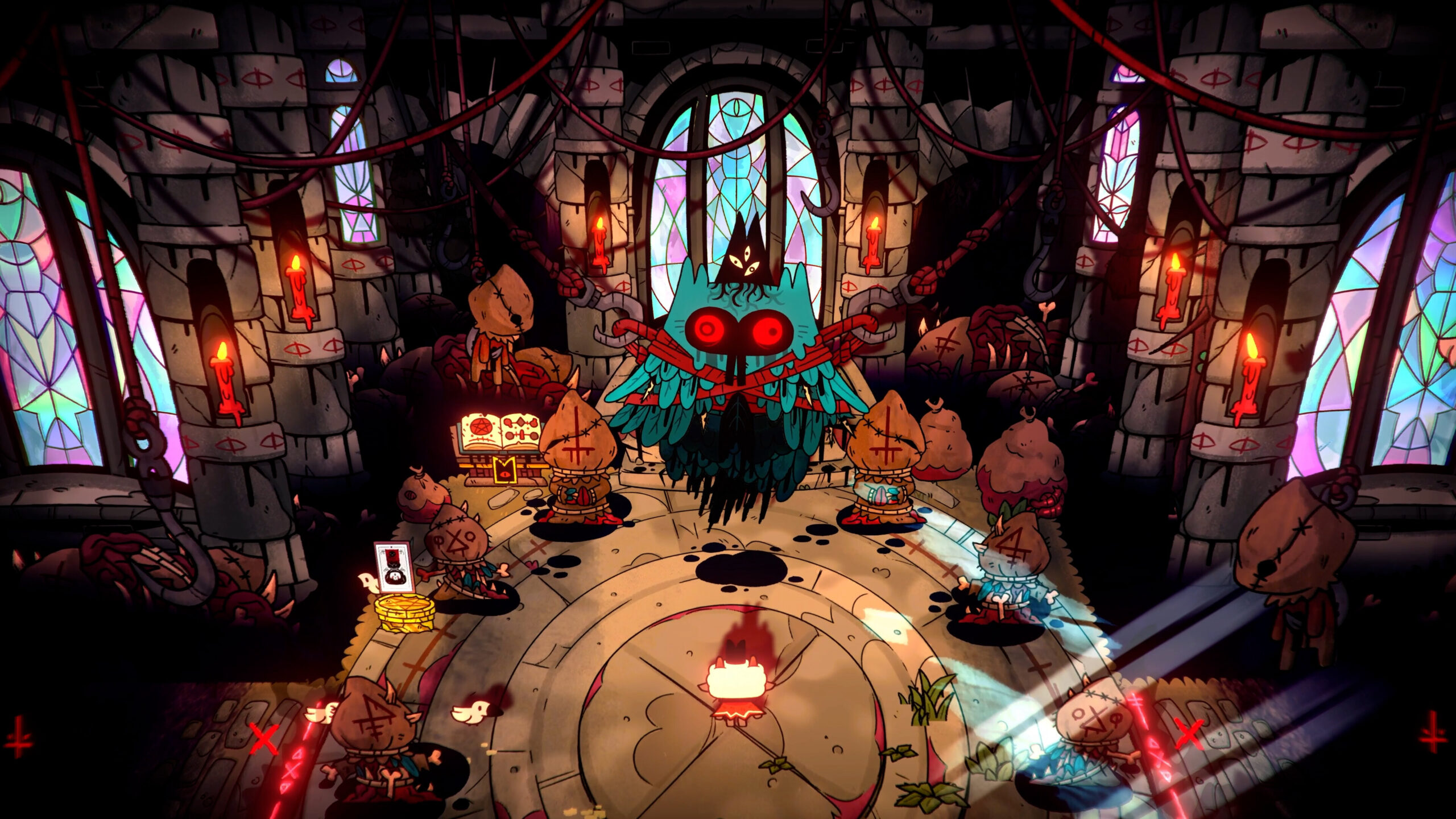
The audio matches this duality. Whimsical melodies mix with eerie choral pieces, shifting between comfort and unease. Additionally, sound effects are punchy in combat and ceremonious during rituals, giving every action weight.
Replayability & Roguelite Design
The game encourages multiple playthroughs. Because roguelite runs, varied rituals, and legacy unlocks keep it engaging, each session feels fresh. Moreover, randomized dungeons and a mix of upgrades ensure variety, while base-building progression offers long-term goals between runs.
Community Reaction & Review Analysis
Reception has been overwhelmingly positive. Steam shows:
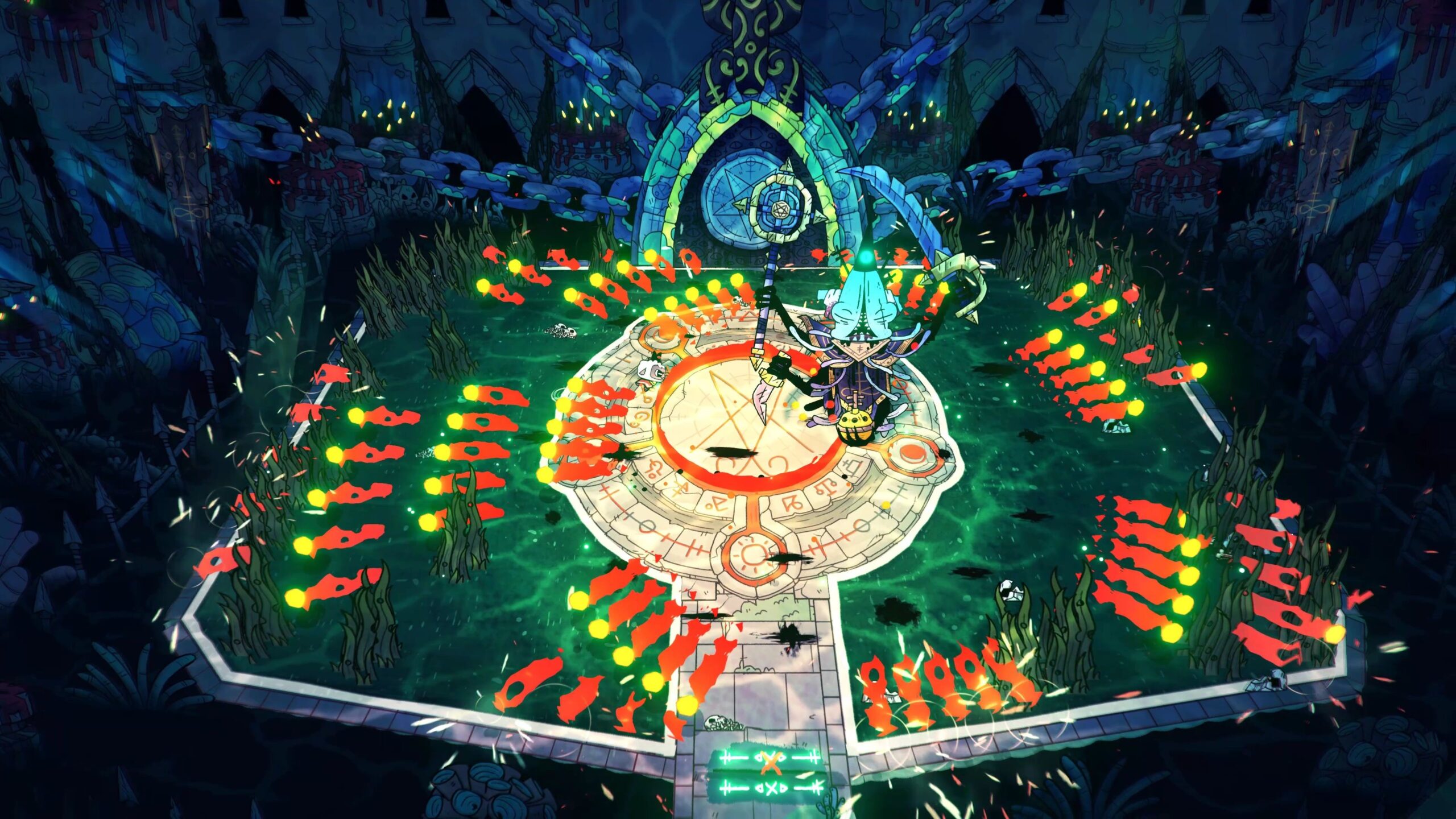
- Recent Reviews: Overwhelmingly Positive (96% of 854)
- All Reviews: Overwhelmingly Positive (95% of 91,825)
What players praise:
- Charisma and Charm: The mix of adorable visuals with grim subject matter creates strong identity.
- Polished Core Loop: The addictive rhythm of raiding and expanding the cult feels rewarding.
- Blend of Genres: Base-building and roguelite action both satisfy.
- Dark Humor & Writing: Consistent tone keeps dialogue fresh and often hilarious.
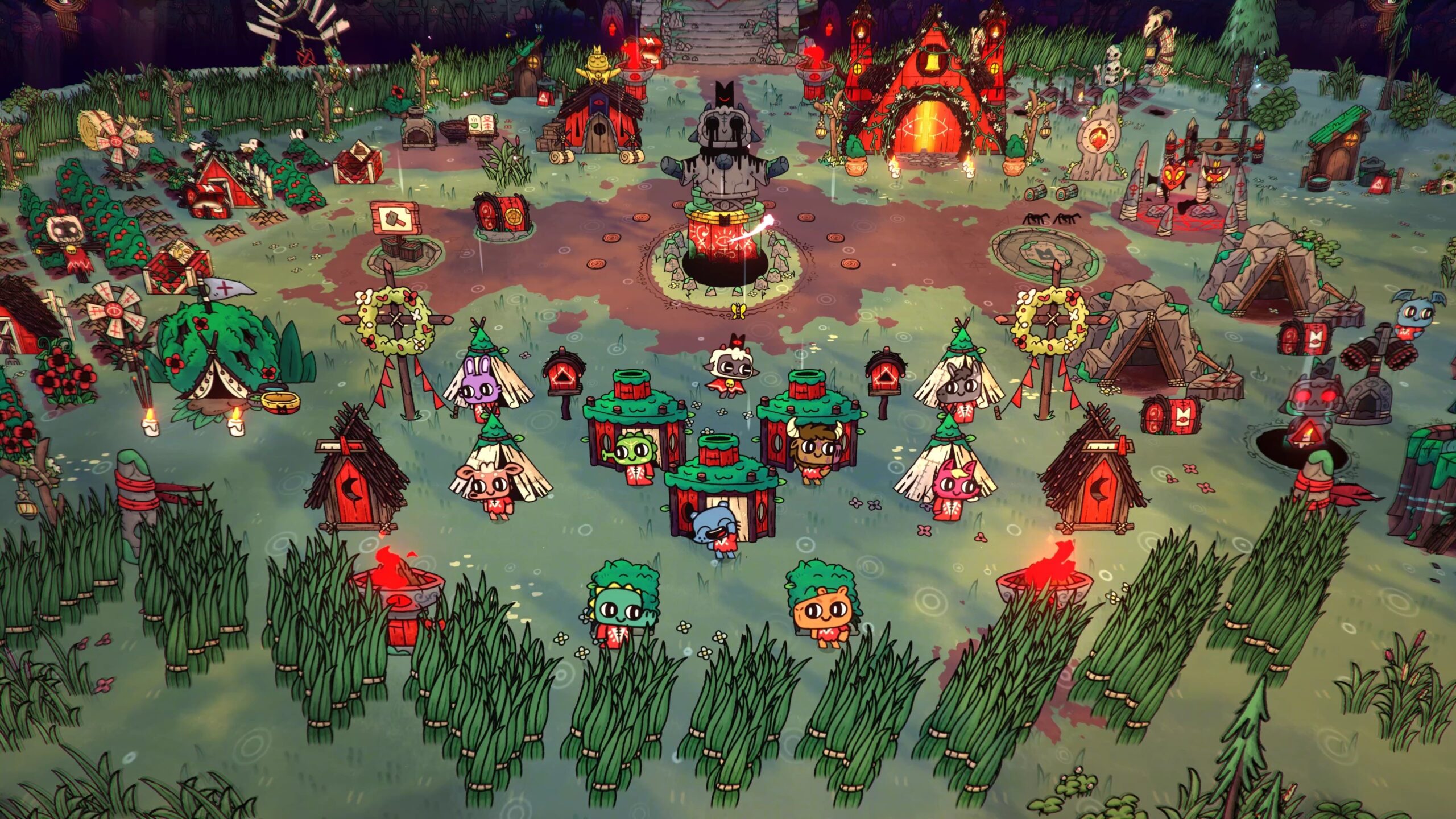
Common criticisms:
- Repetition & Pacing: Later stages can feel grindy.
- RNG Frustration: Random rewards can cause uneven power spikes.
- Singleplayer Focus: No co-op or competitive modes.
- Difficulty Spikes: Some encounters demand specific builds to win.
Taken together, the reviews show a title with a powerful identity and a generally excellent execution, tempered by a few design choices that can grind patience during longer plays. The overwhelmingly positive percentages tell a story of widespread enjoyment — this is a game many players happily recommend — while the qualitative feedback points to where it shines and where it can wear thin.
Impact & Legacy (Nostalgic Perspective)
Looking back through the lens of gaming history, Cult of the Lamb sits at a sweet intersection. It owes a debt to the classics — the emergent simulation of older colony sims and the procedural despair of roguelikes — but it repackages those influences into a compact, modern indie experience. In a way it’s reminiscent of how Stardew Valley pulled disparate mechanics into a coherent whole: here, the developers married charm and cruelty into a game that’s hard to stop playing.
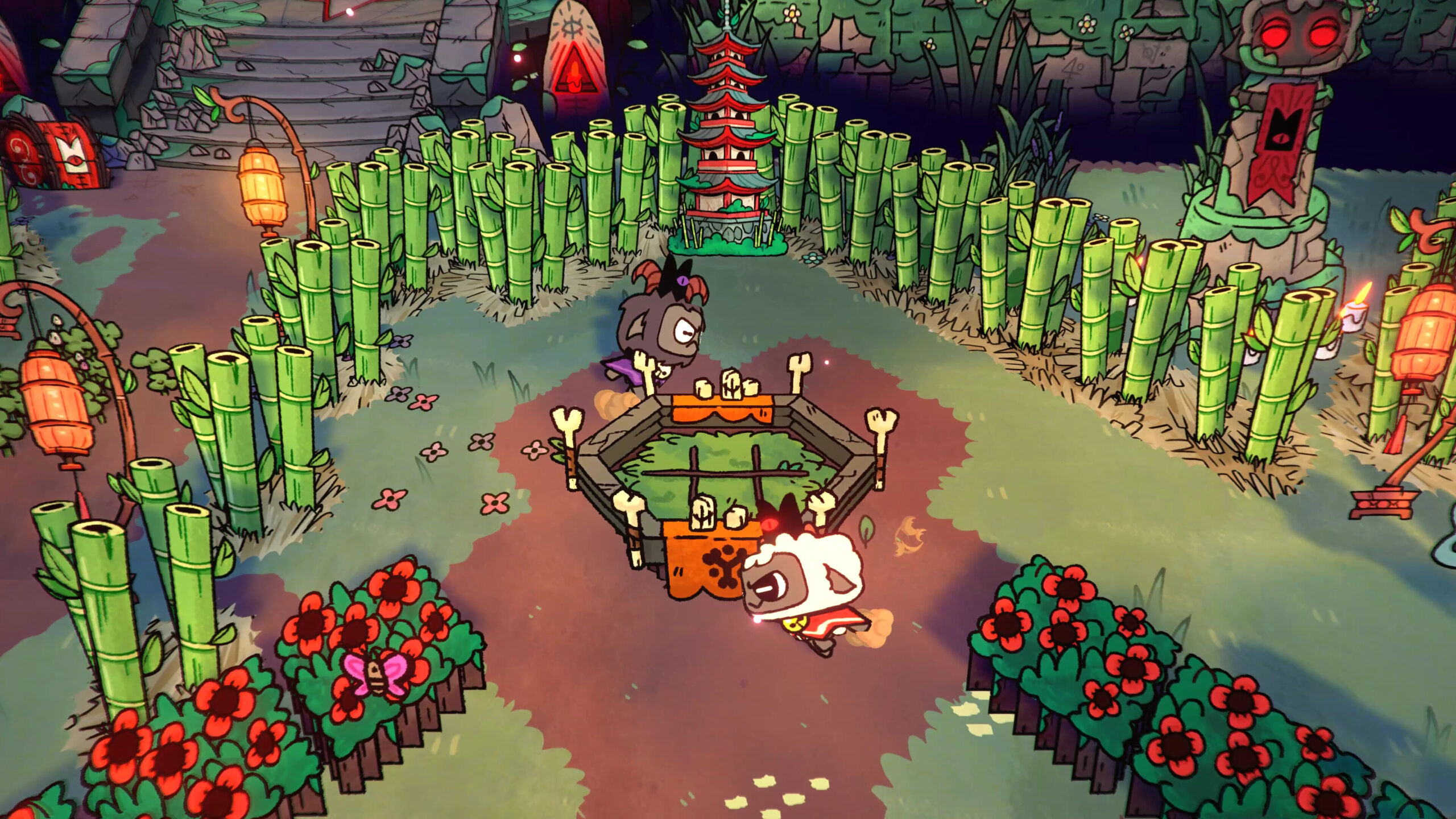
Its legacy is still unfolding, but early signs suggest it will be remembered as a proof-of-concept for hybrid indie design: how bold tonal contrasts and tight loops can create a sticky, memetic game. Developers watching its trajectory will note how a clear identity and careful balancing of systems can propel an indie title to mainstream conversation.
Hardcore Player Tips (From PlayerProX)
- Prioritize Production Early: Set up food and resource buildings first so you can sustain longer excursion windows without forcing low-yield sacrifices.
- Designate Specialists: Assign followers to roles that match their traits. A high-discipline follower as sermon assistant is better than a random assignment.
- Ritual Risk Management: Treat rituals like investments — some have immediate gains with long-term costs. Weigh outcomes against your current power curve.
- Build for Redundancy: RNG can strip your optimal relics away. Build systems that can absorb variance: multiple food sources, alternate defense layouts, and backup followers.
- Learn Boss Patterns: The combat is pattern-based. Once you’ve learned a boss’s tells, entry and exit windows open up reliably.
Final Thoughts
Cult of the Lamb is a rare indie that combines aesthetic risk with mechanical depth. Its overwhelmingly positive reception is well-earned: the game is charming, mechanically engaging, and full of distinctive moments. For players who prize games that reward both strategic planning and moment-to-moment skill, it’s a standout. If you value variety over repetition and cooperative escape hatches, be prepared for some moments of grind.

Historically, it sits alongside other memorable indies that pushed genre boundaries by embracing contrast — cute on the surface, cunning underneath. For many, it’s already a beloved addition to the indie canon and a template for future hybrids.

